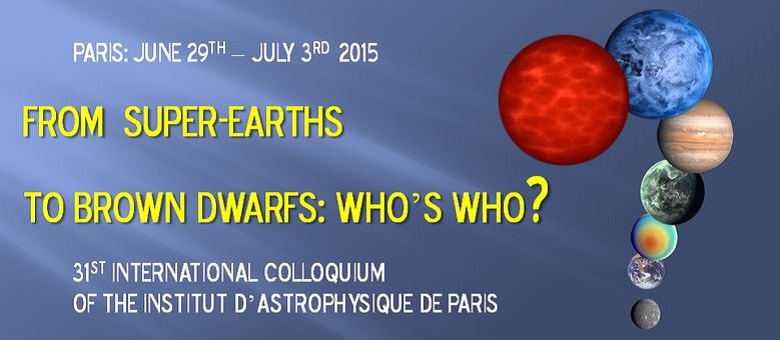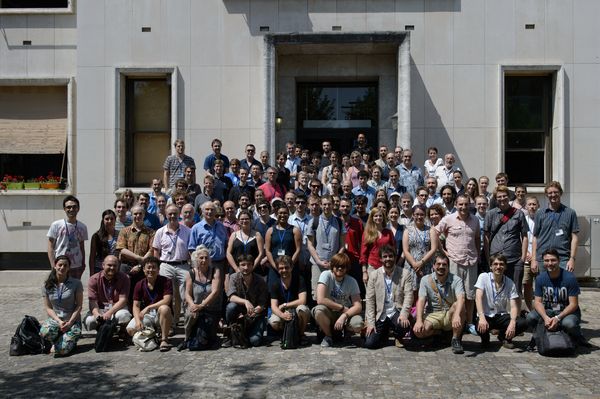
|
Welcome!
From super-earths to brown dwarfs: who's who? the 31st IAP Colloquium, took place at the Institut d'Astrophysique de Paris from June 29th to July 3rd, 2015. |
|
Scientific Rationale
The year 2015 marks the 20th anniversary of the discovery of 51 Peg b, the first confirmed exoplanet around a Sun-like star. This detection has triggered extraordinary development in exoplanet research all around the world, through various observational techniques such as radial velocity variations, transit, microlensing, direct imaging and astrometry. Thereby, over the past twenty years, the increasing number of detected planets has revealed an extreme diversity of objects. As a consequence, research priorities are more and more moving from planet detection to planet characterization. Thus, the purpose of the 2015 IAP Conference is to propose a thorough review of the different classes of planets that comprise this diversity.
The measurement of a planetary mass, mainly constrained with the radial velocity technique, represents generally the first fundamental parameter. For massive sub-stellar companions to stars, observations show a continuous mass function from Jupiter to brown dwarfs, which blur the traditional distinction between these objects and planets. At the low-mass end, the density obtained for transiting planets, by combining photometry with radial velocity information makes possible determination of whether the planet is a rocky body or a mini-Neptune. The radius of the orbit can allow predicting hot, temperate or icy planets. Evolution by migration or loss of atmosphere represents another source of diversity. Considering all these parameters and confronting in each case observational data with models of formation, the transitions between typical classes of planets will be examined during the conference:
- from Earth-mass to super-Earth planets
- from super-Earths to mini-Neptune planets
- from Neptune-mass to Jupiter-mass planets
- from Jupiter-mass to super-Jupiter planets
- from super-Jupiters to brown dwarfs
- from rocky planets to gas giant planets
- from hot to temperate Jupiters
- from bound planets to free-floating planets
The conference will offer fruitful meeting of observers involved in various programs, from ground and from space, with modelers, specialists of the formation of planetary bodies, of disk evolution and of planetary migration, in order to raise news observations, new models and propose new conclusions on the definition of the various types of extrasolar planets.
Contact: |
conferenceIAP2015@iap.fr |
SOC:
|
|
LOC:
|
|

|

|

|

|

|

|

|

|

|
|
Last updated: 24 june 2015
